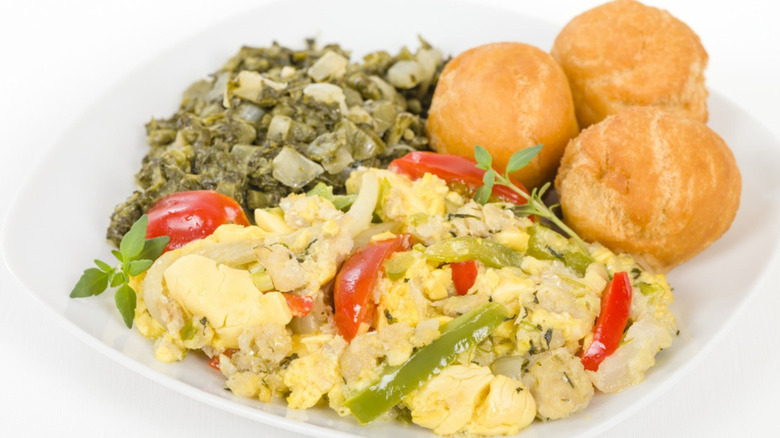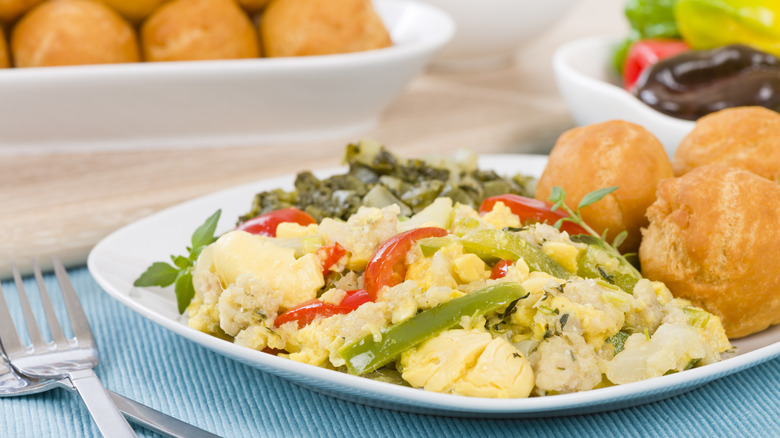Here's What A Typical Breakfast In Jamaica Looks Like
A hearty breakfast looks different all over the world, and if you've ever visited sunny Jamaica, you've likely dined on the country's national dish as your first meal of the day at some point. This flavorful plate contains the island's national fruit as the main ingredient — the pear-shaped ackee. Native to West Africa and related to lychee, this unique fruit has a cream-colored inside that is traditionally eaten in a variety of ways. Tropical evergreen trees all over Jamaica produce the ackee fruit, which can be identified by its bright red flesh, partially open to expose the large, black, toxic seeds inside. As The Spruce Eats explains, "Jamaicans will often say that the fruit will 'yawn' or 'smile' — open naturally, on its own — before it's ready to be picked from the tree."
When fully cooked, the fruit turns a bright yellow that looks almost exactly like scrambled eggs, making it look like a familiar breakfast to American diners. When you taste ackee, though, you'll discover that it's actually subtly savory and nutty, a flavor completely its own. When cooked with a few other key ingredients and spices, ackee becomes a savory feast fit to be crowned Jamaica's national dish.
What are the other ingredients in Jamaica's national dish?
The appetizing national dish of Jamaica is ackee and saltfish, which combines salty, sweet, and spicy flavors for a delicious blend of tastes and textures with every bite. Garlic, onion, tomatoes, scallions, and Scotch bonnet peppers all play an important role when sauteed with the soft ackee, giving it a zesty kick that pairs well with salty cod. Per Jamaican Food and Recipes, the saltfish is rinsed, soaked, and poached before simmered with the ackee and remaining ingredients. In the end, the dish resembles a veggie scramble but tastes more complex than your typical breakfast buffet fry-up.
Ackee was likely brought to Jamaica in the 18th century during the slave trade. Combined with long-lasting saltfish, it "made a cheap and nutritious repast for enslaved people on the country's hot, humid sugar plantations," per BBC. Jamaicans still eat the dish with gusto today, typically with fried plantains and johnnycakes on the side.
Due to the toxicity of the seeds and unripe fruit, raw ackee is banned in the U.S. You can find precooked ackee in a can in international stores or online, though, which Tanya of My Forking Life says works well in a pinch. Better yet, book yourself a plane ticket to treat your taste buds to a truly authentic plate of ackee and saltfish that will get you thinking about new ways to improve your own breakfast traditions.

